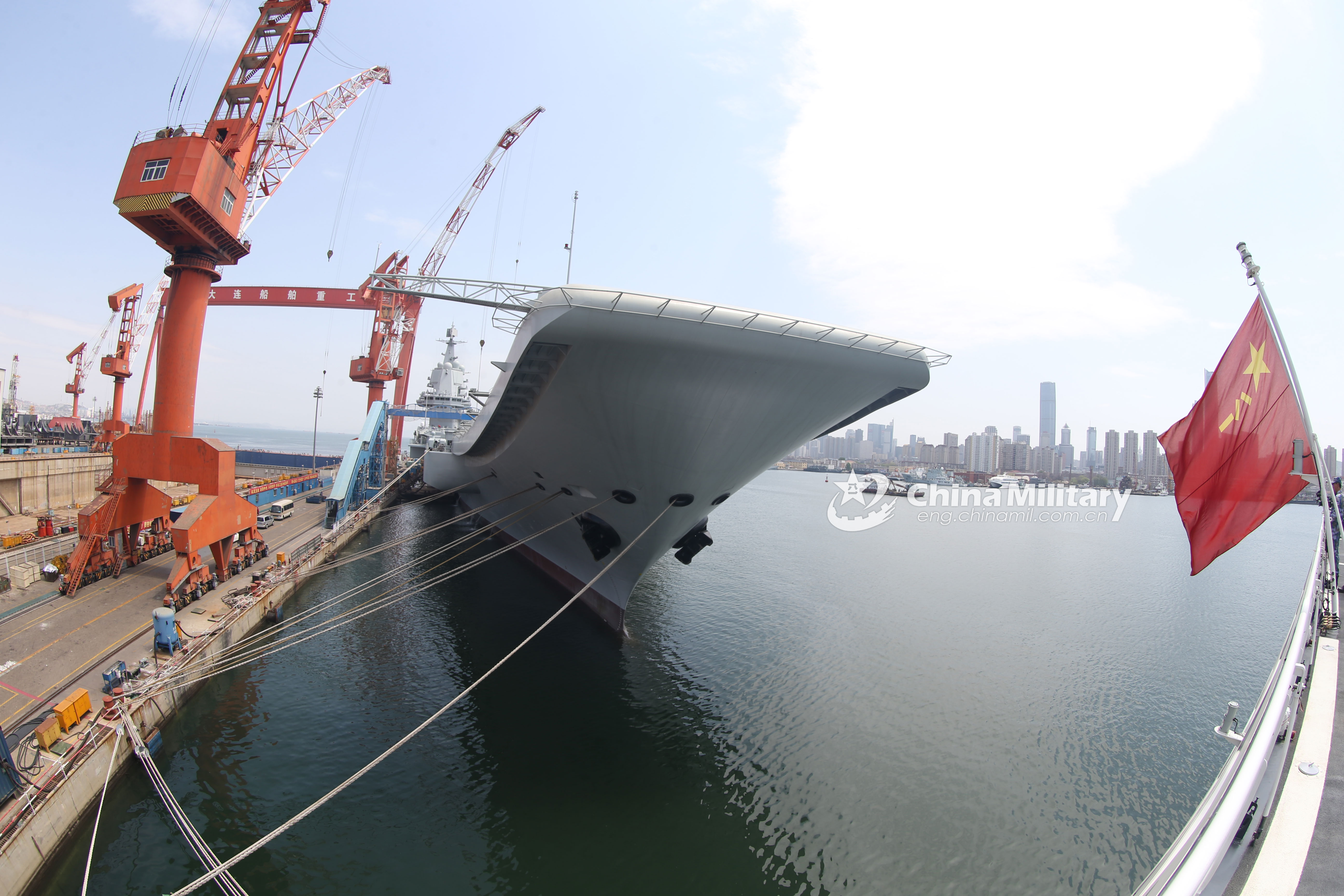
China's second aircraft carrier returns to dock at the Dalian Shipyard in northeastern China's Liaoning Province on May 18 after its first sea trials. The aircraft carrier, the country's first domestically-built one, was launched in April last year and began the sea trials on May 13, 2018. (eng.chinamil.com.cn/Hou Rong)
Reuters reported on July 4 that Japan will send a large helicopter carrier to the South China Sea and Indian Ocean in September for a two-month patrol. If this turns out to be true, it will be another South China Sea patrol by Japan’s “quasi-aircraft carrier” for several consecutive years. A Japanese official said quoted by Reuters, “This is part Japan’s efforts to promote a free and open Indo-Pacific.”
But this is no doubt irritating news for China, as it goes counter to the improving atmosphere of China-Japan relations. It corroborates a widespread assessment of Japan’s diplomatic behavior: Tokyo’s words and deeds often send out contradictory signals.
Sometimes, we cannot tell whether Japan acts on purpose or just because it does not fully understand that such inconsistency may undermine the improvement of China-Japan relations.
There are various analyses and conjectures around Japan’s real intention of sending its “quasi-aircraft carrier” to the South China Sea. A mainstream view holds that it is a symbolic step for Tokyo to state its loyalty to Washington.
The United States hopes to keep the South China Sea region a hotspot and has taken the lead in challenging China under the excuse of asserting “freedom of navigation” in the South China Sea. The United States needs its allies to stand by it so that it won’t be alone.
We have noticed that for some time, several American allies have announced plans to assign warships to carry out “freedom of navigation” operations in the South China Sea, including France and Britain, but most of them have yet to put their words into practice or with their warships merely “passing” by the South China Sea, turning the issue into a subtle game. Australia also said it would send warships there for “freedom of navigation”, but it is unclear whether it has really sent a ship or when it will do so.
The last time Japan’s quasi-aircraft carrier “Izumo” came to the South China Sea, it was closely followed by the media. This time, the related news has come out even before the aircraft carrier “Kaga” arrived in the region. Tokyo has thus taken the highest profile in cooperating with the United States for “freedom of navigation”.
Does Tokyo only want to put on a show for Washington, or does it proactively want to contain Beijing and create a bargaining chip in the game with China, or is this a part of its plan to further enhance its military strength?
Perhaps Japan does want to kill several birds with one stone, including building a diplomatic pivot in the South China Sea and increasing its presence in terms of regional security.
Anyway, Japan has thought a lot about this and is persistent in throwing such curveballs. We can make the following analyses regarding the consequences of its action.
First, Japan sending its “quasi-aircraft carrier” to patrol the South China Sea will not pose any actual threat to China, much less affect China’s island and reef construction in the region. If Japanese warships were to enter the 12 nautical-mile area around Chinese islands and reefs, it would face serious risks. We do not think Japan will do that, because it knows very well it is unable to withstand those risks. Instead, it will choose a less controversial trajectory.
Second, Japanese warships entering the South China Sea would be considered a political and diplomatic provocation to China no matter what excuse it used. One of Tokyo’s purposes must be to create the impression that it could control the situation, otherwise its warships would come in vain. It is fully aware that China is opposed to such action, but that’s how Japan deals with its relation with China.
Third, Japan’s provocation is sure to negatively impact China-Japan relations. There will be the possibility that China may take some kind of countermeasures, which is completely out of Japan's own making. Tokyo knows perfectly well that China has the ability and means of retaliation, and it would not end well if the two countries launched a “tit-for-tat” game at sea.
The South China Sea isn’t the place for Japan to enhance its presence. Japan is a typical country from outside the region and the South China Sea has always been completely open for Japanese merchant ships, so it should repay the good will to the region.
Japan should restrain itself in cooperating with the United States’ South China Sea operations and take full into consideration China’s feelings. The South China Sea isn’t the proper place for it to game with China.
China and Japan are at a critical period of improving their relations. We hope Tokyo will clearly realize the significance of the China-Japan relations, show strategic wisdom between China and the United States, and not take side, because that would be harmful both for regional peace and its own interests.
China and Japan will be neighbors forever, and adhering to the principle of constructive neighborly relations is beneficial to Japan in every respect.
Disclaimer: The article is an editorial of the Global Times. It is translated from Chinese into English and edited by the China Military online. The information, ideas or opinions appearing in this article are those of the author and do not reflect the views of eng.chinamil.com.cn. Chinamil.com.cn does not assume any responsibility or liability for the same. If the article carries photographs or images, we do not vouch for their authenticity.









